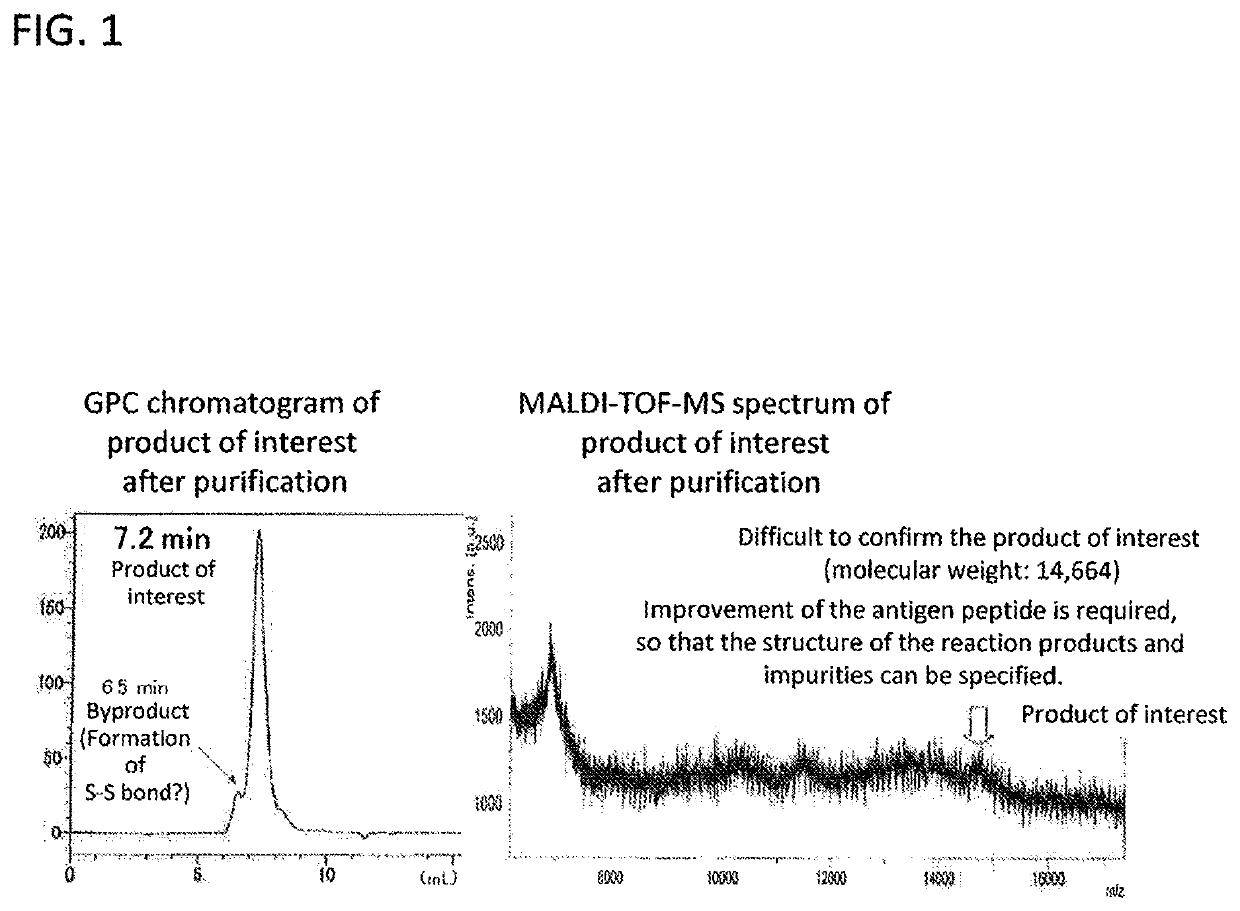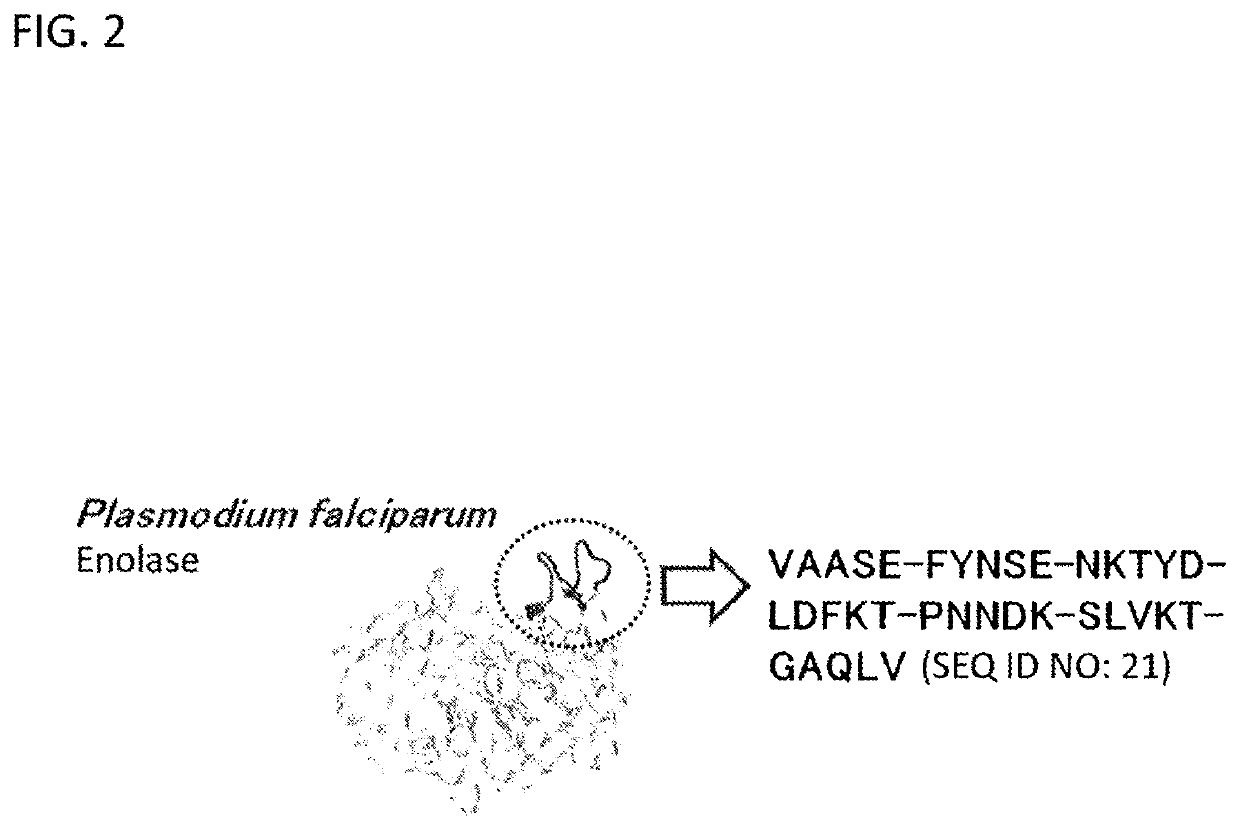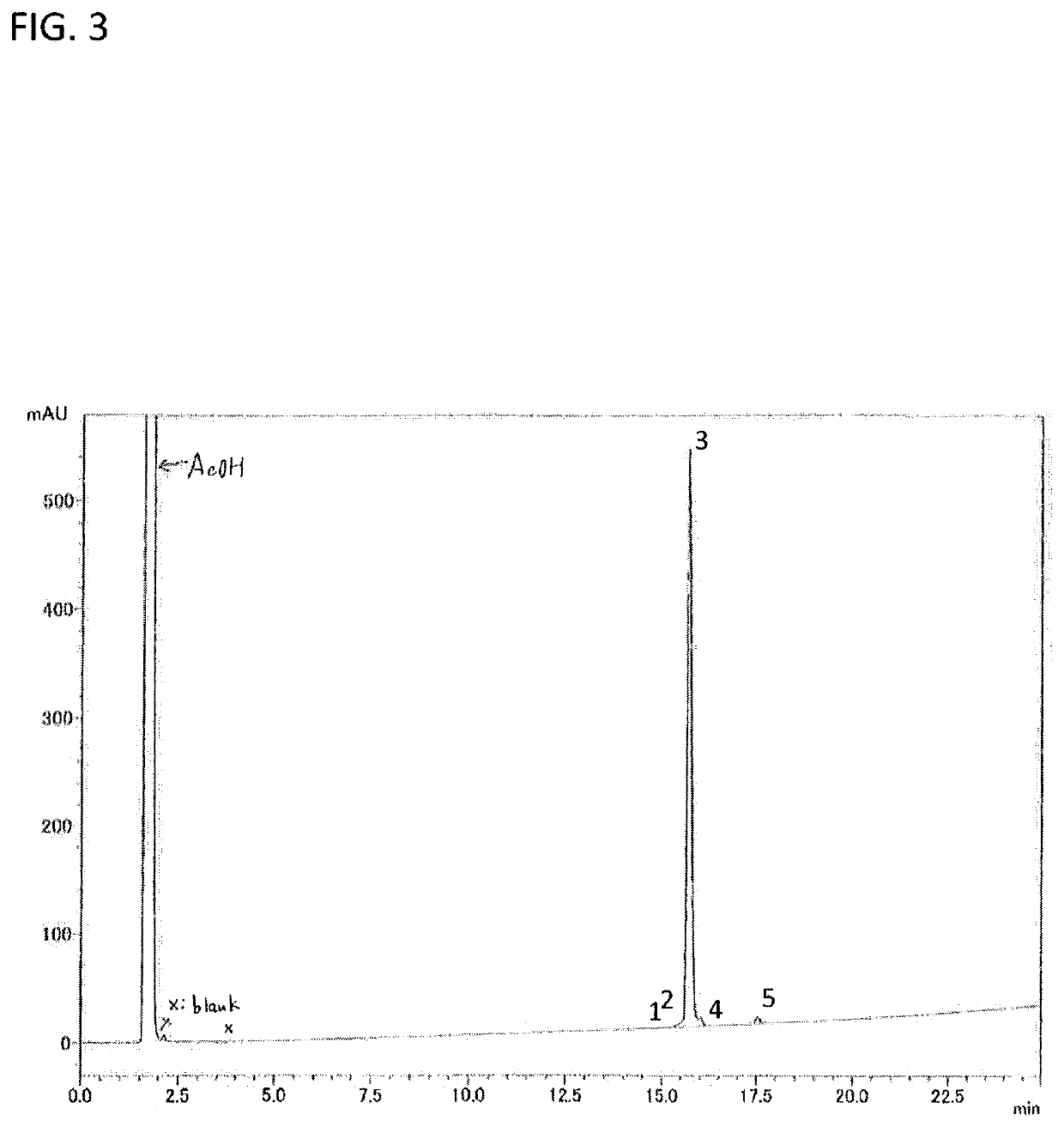Artificial antigen produced using partial sequence of enolase protein originated from plasmodium falciparum, and method for producing same
a technology of plasmodium falciparum and enolase, which is applied in the field of bioactive peptides, can solve the problems of drug-resistant malaria parasite emergence and proliferation, stagnation in economy and social unrest, and death of patients, and achieve the effect of provoking protective immunity and inhibiting proliferation
- Summary
- Abstract
- Description
- Claims
- Application Information
AI Technical Summary
Benefits of technology
Problems solved by technology
Method used
Image
Examples
reference example 1
[0132]A peptide library of peptides 1 to 8 (SEQ ID NOs: 10 to 17), which are divided peptides obtained from a 35-residue sequence of 254th to 288th residues (FIG. 2) of the amino acid sequence of the parasite enolase, was used. Each of the peptides of the peptide library was allowed to react with plasminogen using a Dot-Blot method and an ELISA method, thereby carrying out a search for an amino acid sequence recognized by plasminogen.
Reactivity of Peptide Library with Plasminogen, Measured by Dot-Blot Method:
[0133]The reactivity of the peptides was measured by a Dot-Blot method, using a 10% acetonitrile solution of each of 8 types of peptides, peptide 1 to peptide 8, by the following steps in the following order; (a) immobilization of each peptide on a nitrocellulose film (pore size: 0.45 μm); (b) reaction with plasminogen in a plasminogen solution; (c) reaction with an HRP-labeled anti-plasminogen antibody; and (d) DAB staining. The photograph of the nitrocellulose film after the D...
example 1
Synthesis method for the antigen peptide (I′) and the antigen peptide (II′)
[0139]Synthesis schemes for synthesizing the antigen peptide (I′) and the antigen peptide (II′) are exemplified below (E5-AD22-PG: SEQ ID NO: 6; E5-AD22-PGC: SEQ ID NO: 7; K-E4-C: SEQ ID NO: 8; and K-E4-CK: SEQ ID NO: 9).
[0140]An example of production scheme of novel antigen peptide (I′) (AD22map2-SS)
[0141]
[0142]An example of production scheme of novel antigen peptide (II′) o(AD22map2pal-SS)
[0143]
[0144]First, a monomer of each of the antigen peptide (I′) and antigen peptide (II′) (AD22map2 and AD22map2pal, respectively) was prepared by a common Fmoc peptide synthesis method. In the Fmoc peptide synthesis method, a Finoc-βAla-PEG resin (the amount of Fmoc amino acid introduced into the resin is defined herein as 1 eq), which is a resin into which the first amino acid is introduced in advance by an ordinary method, was used. For the deprotection of the Fmoc group, 2% DBU / DMF (or 30% piperidine / DMF) was used, an...
example 2
Analysis Data of Antigen Peptide (I′) (AD22map2-SS)
Appearance: white, freeze-dried product
Amino acid analysis values: (hydrolysis conditions: 6 M HCl aq. (with Phenol) 110° C., 22 hrs)
Asp (28) 28.00, Thr (8) 7.78, Ser (8) 7.21, Glu (36) 35. 62, Gly (4) 4.02, Ala (4) 4.00, Cys (2) 1.36, Leu (4) 4.03, Tyr (8) 8.00, Lys (10)10.07, NE13 (16) 18. 08, Pro (8) 8.18, Phe (8)+β-Ala (2) 10.01.
Purity (HPLC): 96.3% (FIG. 3)
Analysis conditions: Column, Zorbax 300SB-C18 (4.6×150 mm); Eluant: 10 to 60% MeCN / 0,1% TFA (25 min); Temp.: 50° C.; Flow rate: 1.0 mlimin; Detector; 220 nm; Load: 4 μL (0.28 mg / 0.560 mL 50% AcOH).
ESI-MS: MW=15249.3 (theoretical value: 15249.3) (FIG. 4)
Measurement condition
Apparatus: HP 1100 series LC / MSD, manufactured by Agilent Technologies
Sample concentration: 1 nmol / 5 micro-L
Diluting solvent: 50% MeCN / H2O:1 N NH3 aq.=95:5
PUM
| Property | Measurement | Unit |
|---|---|---|
| temperature | aaaaa | aaaaa |
| temperature | aaaaa | aaaaa |
| solubility | aaaaa | aaaaa |
Abstract
Description
Claims
Application Information
 Login to View More
Login to View More - R&D
- Intellectual Property
- Life Sciences
- Materials
- Tech Scout
- Unparalleled Data Quality
- Higher Quality Content
- 60% Fewer Hallucinations
Browse by: Latest US Patents, China's latest patents, Technical Efficacy Thesaurus, Application Domain, Technology Topic, Popular Technical Reports.
© 2025 PatSnap. All rights reserved.Legal|Privacy policy|Modern Slavery Act Transparency Statement|Sitemap|About US| Contact US: help@patsnap.com



